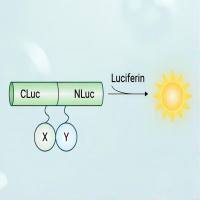Applications of Cell Imaging in Salmonella Research
互联网
735
Salmonella enterica is a Gram-negative enteropathogen that can cause localized infections, typically resulting in gastroenteritis, or systemic infection, e.g., typhoid fever, in both humans and warm-blooded animals. Understanding the mechanisms by which Salmonella induce disease has been the focus of intensive research. This has revealed that Salmonella invasion requires dynamic cross-talk between the microbe and host cells, in which bacterial adherence rapidly leads to a complex sequence of cellular responses initiated by proteins translocated into the host cell by a type III secretion system (T3SS). Once these Salmonella -induced responses have resulted in bacterial invasion, proteins translocated by a second T3SS initiate further modulation of cellular activities to enable survival and replication of the invading pathogen. These processes contribute to Salmonella entry into the host and the clinical symptoms of gastrointestinal and systemic infection. Elucidation of the complex and highly dynamic pathogen-host interactions ultimately requires analysis at the level of single cells and single infection events. To achieve this goal, researchers have applied a diverse range of microscopical methods to examine Salmonella infection in models ranging from whole animal to isolated cells and simple eukaryotic organisms. For example, electron microscopy and confocal microscopy can reveal the juxtaposition of Salmonella , its products, and cellular components at high resolution. Simple light microscopy (LM) can also be used to investigate the interaction of bacteria with host cells and has advantages for live cell imaging, which enables detailed analysis of the dynamics of infection and cellular responses. Here we review the use of imaging techniques in Salmonella research and compare the capabilities of different classes of microscope to address specific types of research question. We also provide protocols and notes on several LM techniques routinely used in our own research.









